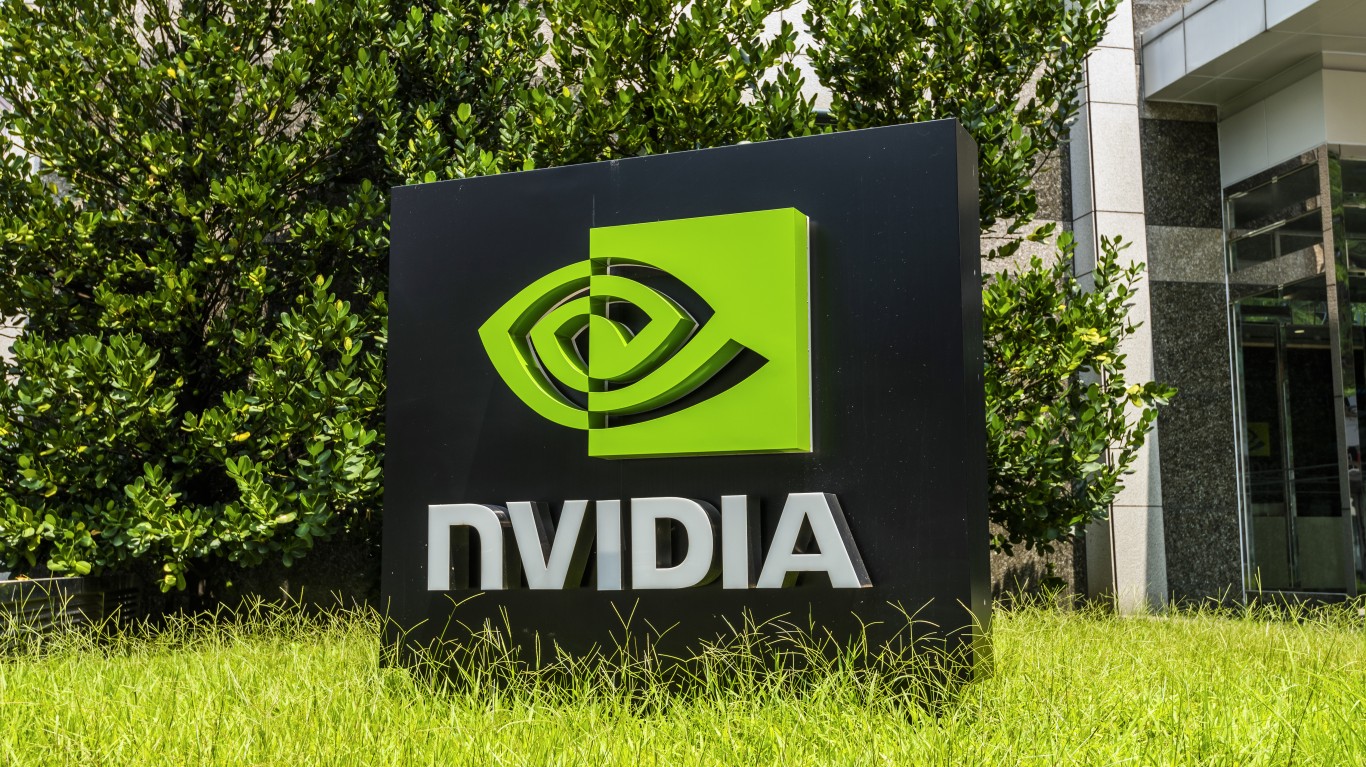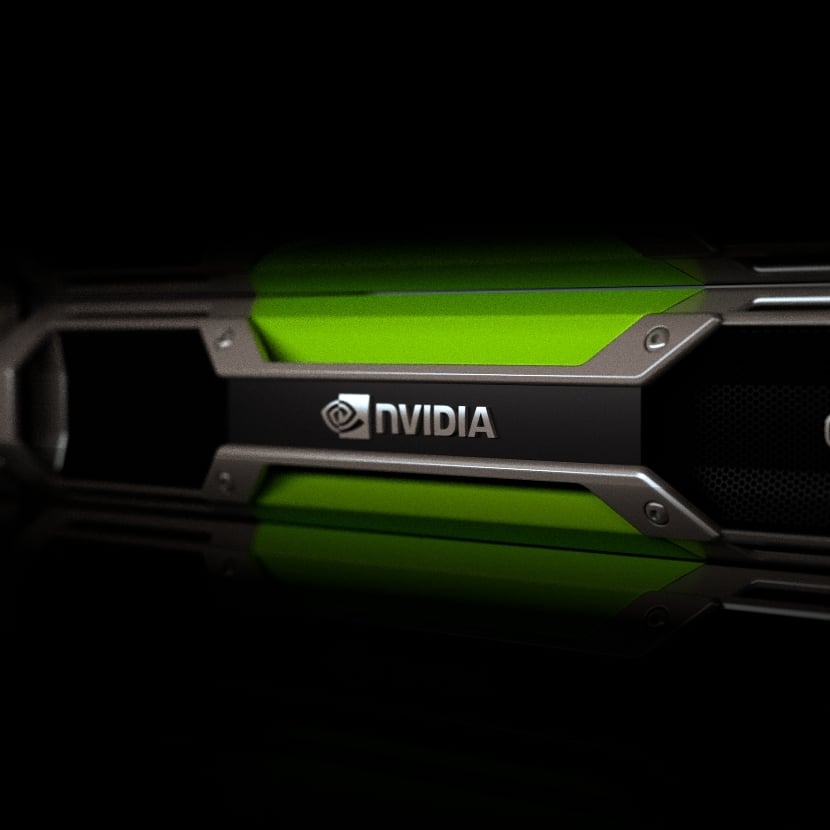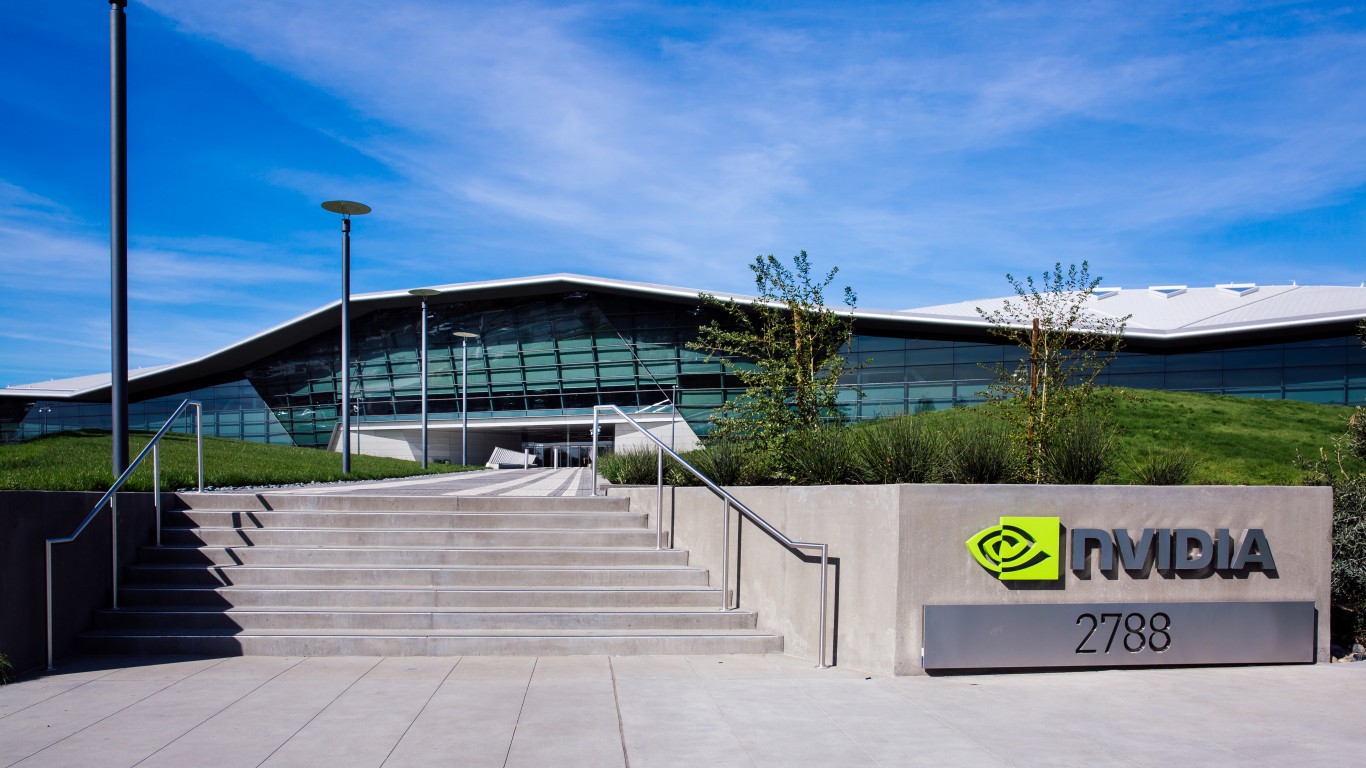

NVIDIA (NASDAQ: NVDA) continues marching higher seemingly every day and now sits just shy of $1,000 per share, with a $2.3 trillion market cap. Its relentless rise brings comparisons to Cisco (Nasdaq: CSCO) during the Dot-Com era.
And surely if NVIDIA falls, it will be known as the poster child for AI hype. However, many of the same pundits calling NVIDIA overvalued today were also calling it wildly overvalued at $100 (or less) per share as well. Let’s take a look at whether NVIDIA could make a run for $2,000 per share and what risks could cause its stock to collapse as well.
Where NVIDIA Stands Today

NVIDIA’s stock is now up more than 90% year to date, which has added more than a trillion to its market cap. Here are some of the key metrics surrounding the company:
- Market Capitalization: 2.29 trillion (third largest stock)
- Trailing Revenue: $60.9 billion
- Trailing Net Income: $29.8 billion
- Trailing P/E: 77X
- Fiscal 2025 Projected Revenue: $110.1 billion
- Fiscal 2025 Projected Earnings: $56.9 billion
As you can see here, NVIDIA bulls will point to it trading for about 40X this year’s (Fiscal 2025) earnings as evidence there’s more room to run. After all, other massive companies riding the AI boom like Microsoft trade for 34X next year’s earnings despite much lower growth rates.
NVIDIA Earnings Propel Recent Gains
NVIDIA’s recent surge has come on the heels of its outstanding fourth quarter earnings. Expectations were very lofty, but NVIDIA comfortably exceed them and delivered $12.2 billion in earnings, which was up 769% from the year prior.
NVIDIA’s stock has seen days of declines headed into earnings mostly on supply chain chatter that demand for its H100 chips – which are commonly used for artificial intelligence workloads – were declining. Customers were reporting that wait times for new orders had gone down from more than a year to less than six months. The indication here would be that large hyperscalers (like Meta or Microsoft) were cutting back on stockpiling AI chips which could lead to NVIDIA’s growth slowing dramatically in the back half of 2024.
However, commentary from the company indicates that demand for upcoming chips (the H200 and B100) is very strong and these chips will begin ramping before the company sees an annual reduction in demand of their older chips. Put another way: NVIDIA should continue showing strong year-over-year growth well into 2025.
The Case for NVIDIA at $2,000 Per Share

NVIDIA hitting $2,000 per share will probably require a mix of positive news from the company and the AI industry in general. Recent share price gains have been accompanied by major announcements in the AI space. OpenAI released their mind-bending SORA model which turns text inputs into (sometimes) Hollywood-level videos.
One tidbit that was picked up by investors was that OpenAI said more compute leads to dramatically better results for SORA. That is to say, the more of NVIDIA’s GPUs used by the model, the more realistic the videos. You can see the difference between base, 4X, and 16X compute in this video. Obviously, the key element to better AI simply being adding more of NVIDIA’s processors is extremely positive for the stock’s long-term outlook.
(Seriously, go watch that video!)
And on Monday of this week (March 4th), Anthropic released their Claude 3 Model which had benchmarks that exceeded OpenAI’s GPT-4. The model has even demonstrated being able to “realize” when it was being tested.
Each new model that drops to rave reviews not only brings more mainstream attention to the field of AI, but strengthens the conviction of investors that the AI arm’s race (and resulting GPU sales to NVIDIA) is still going strong.
So the keys to NVIDIA hitting $2,000 per share would be:
- Continued positive news from the AI space with models advancing at a pace beyond expectations
- Which leads to incredible (and supply-constrained) demand for NVIDIA’s upcoming H200 and B100 chips
- Which then leads to the company exceeding projected revenues of $110 billion this year
You could imagine if NVIDIA delivered closer to $125 billion in revenue this year, that would keep at the company at growth rates exceeding 100%. More importantly, it could lead to all sales and profit projections in future years to continue rising. Presently, NVIDIA is expected to deliver $56 billion in Fiscal 2025 profits, $66 billion in 2026, $79 billion in 2027, and $102 billion in 2028.
If NVIDIA delivered closer to $65 billion in profits this year, you could see estimates for Fiscal 2026 rising to north of $75 billion and Fiscal 2028 beginning to exceed $125 billion. At that point, NVIDIA reaching $2,000 per share would be worth about $4.8 trillion and trading for just south of 40X Fiscal 2028 profit estimates.
Does it cause me to laugh a bit typing out NVIDIA being worth nearly $5 trillion? Of course! But then again a year ago if felt almost inconceivable the stock could hit a trillion and here we are today!
The Bear Case for NVIDIA
Of course, the bear case for NVIDIA comes down to a question of how it can possibly get larger. At $2,000 per share, NVIDIA would be worth close to $5 trillion – which is worth 60% more than the world’s largest company today.
Global semiconductor sales totaled $526.8 billion in 2023. Projections for NVIDIA’s revenue this year already have them at about 20% the entire industry’s market share. Then they’re projected to record an astonishing 51.6% after-tax profit margin on these sales.
So, if you’re buying NVIDIA above $1,000 per share, it has to be done with the assumption they’ll be able to keep these margins for the long run and collect what could approach the majority of global semiconductor revenues.
Wrapping Up
I’ve long been a big believer and owner of NVIDIA’s shares. Headed into the last decade, I posted on The Motley Fool that it was my ‘Best Stock for 2010‘ and predicted the company would eventually see its chips break into artificial intelligence.
At the time of writing that article, NVIDIA traded for a split-adjusted $4.67 per share, so it outperformed even the wildest expectations I could have dreamed of. Getting to $2,000 will “only” be about a double from today’s prices, but will require the same kind of shattering expectations.
Simply put, another double from here assumes NVIDIA will capture the majority of global semiconductor sales and retain margins that put every other tech company to shame. Good luck.
Sponsored: Attention Savvy Investors: Speak to 3 Financial Experts – FREE
Ever wanted an extra set of eyes on an investment you’re considering? Now you can speak with up to 3 financial experts in your area for FREE. By simply
clicking here you can begin to match with financial professionals who can help guide you through the financial decisions you’re making. And the best part? The first conversation with them is free.
Click here to match with up to 3 financial pros who would be excited to help you make financial decisions.
Thank you for reading! Have some feedback for us?
Contact the 24/7 Wall St. editorial team.



